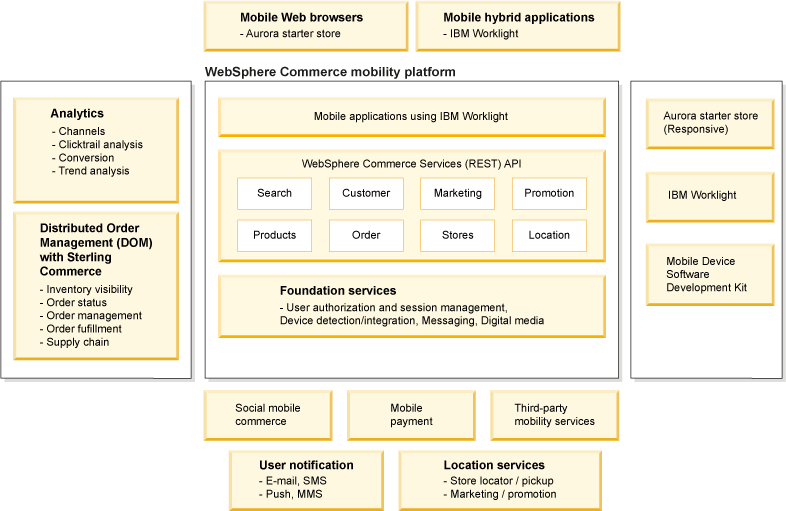Mobile applications that use IBM Worklight
Hybrid applications are accessed as an app
directly installed on mobile devices. They are
typically installed onto a device by using a storefront that is provided by the mobile device
vendor. Hybrid applications deliver a native experience by wrapping the mobile web storefront with a
native shell. The native shell elements are coded with the operating system's Software Development
Kit (SDK), while the storefront is accessed by using the mobile web interface.
IBM Worklight is a mobile application platform that you can use to develop cross-platform hybrid applications for the Aurora starter store.
Hybrid Android applications deliver design aspects and usability elements that function similar to a fully native application.
- Easy storefront updates (if the native shell does not require updating)
- The ability to use device-specific widgets
- A native user experience
- Using JavaScript to-device API mapping to access device-specific features such as the contacts, camera, user location, and mapping.
The following diagram illustrates the relationship between WebSphere Commerce, the Aurora
starter store on mobile devices, and other platforms:


Where the following integration points exist:
- Mobile devices can access the Aurora starter store by using their mobile Web browsers or hybrid applications that are built with IBM Worklight.
- Capabilities such as analytics and distributed order management (DOM) integration can be added to the Worklight hybrid applications. For example, orders that are submitted through the mobile channel can be processed by your back-end DOM system.
- The technologies that are used in building the mobile reference applications support device-specific Software Development Kits (SDKs) and mobile web development technologies. For example, HTML 5, CSS 3, and Dojo mobile.
- Other possible integration points for mobile such as user notification capabilities, social mobile commerce, mobile payments, location services, and other vendor mobility services.